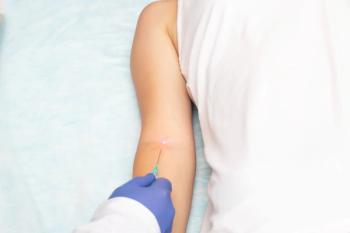
The Effects of Pharmacist Intervention in the Management of Outpatient Oral Oncolytics

Key Takeaways
- Oral oncolytics improve patient quality of life but require careful monitoring due to potential adverse events.
- Pharmacist follow-up calls are essential for assessing treatment tolerance and enabling timely interventions.
Oral oncolytics has become increasingly common as treatment for patients with cancer over the past several years.
Oral oncolytics allows patients to self-administer their cancer treatment from the comfort of their own home, yet it also presents challenges regarding its appropriate dispensing, administration, and monitoring, according to a poster presented by Jacqueline Majeski, PharmD, a PGY2 oncology pharmacy resident from Maine Medical Center, at HOPA Ahead 2020.
Oral oncolytics has become increasingly common as treatment for patients with cancer over the past several years. The convenience of the treatment can improve a patient’s quality of life, but the toxicity profile of the medication means the improper administration of the treatment can cause serious adverse events (AEs) and even harm if not taken as prescribed.
According to Majeski, follow-up phone calls to patients by pharmacists may provide the insight needed to understand how patients are tolerating treatment, so that immediate interventions can be made as necessary.
Furthermore, Majewski noted that performance evaluations of pharmacist-led monitoring practices are also necessary to ensure that patients are receiving the support they need to manage their treatment successfully.
In the study, the primary objective was to have a stronger understanding of current adherence to the 2016 American Society of Clinical Oncology/Oncology Nursing Society Chemotherapy Administration Safety Standards for oral oncolytics in its pharmacist-led oral oncolytic management program.
The secondary objectives of the study were to assess the amount of pharmacist-driven interventions that occurred during a follow-up phone call or at time of a medication refill, as well as how many of the recommendations made by the pharmacist were accepted and acted upon by the provider.
All patients age ≥ 18 years who received an oral oncolytic prescription for malignancy between April 1, 2019 and September 30, 2019 were included in this retrospective chart review. However, any patients who were prescribed a hormonal oral agent or were enrolled in a clinical trial were excluded from the review.
Each patient in the study had an electronic medical record that was reviewed for pharmacist interventions. The interventions included in the review were dose modifications, patient education, AE management, recommendations for lab monitoring, medication procurement assistance, and drug interaction management.
Additionally, the information contained in the oral oncolytic prescriptions was used to determine compliance to ASCO/ONS safety guidelines, with compliance being defined as meeting 75% of the required safety components for oral oncolytics.
This threshold for compliance was based on prior research that was used to conduct a previous compliance project by Majewski. She noted that each compliance project should supply her with the data necessary to appropriately compare the results of each, although the results of the most recent study are still pending and have not yet been published.
REFERENCE
Majeski J. Impact of a Pharmacist Managing Outpatient Oral Oncolytics. HOPA conference. Published March 12, 2020; virtual. eventscribe.com/2020/HOPAahead/PosterTitles.asp?pfp=PosterTitles. Accessed May 8, 2020.
Newsletter
Stay informed on drug updates, treatment guidelines, and pharmacy practice trends—subscribe to Pharmacy Times for weekly clinical insights.













































































































































































































